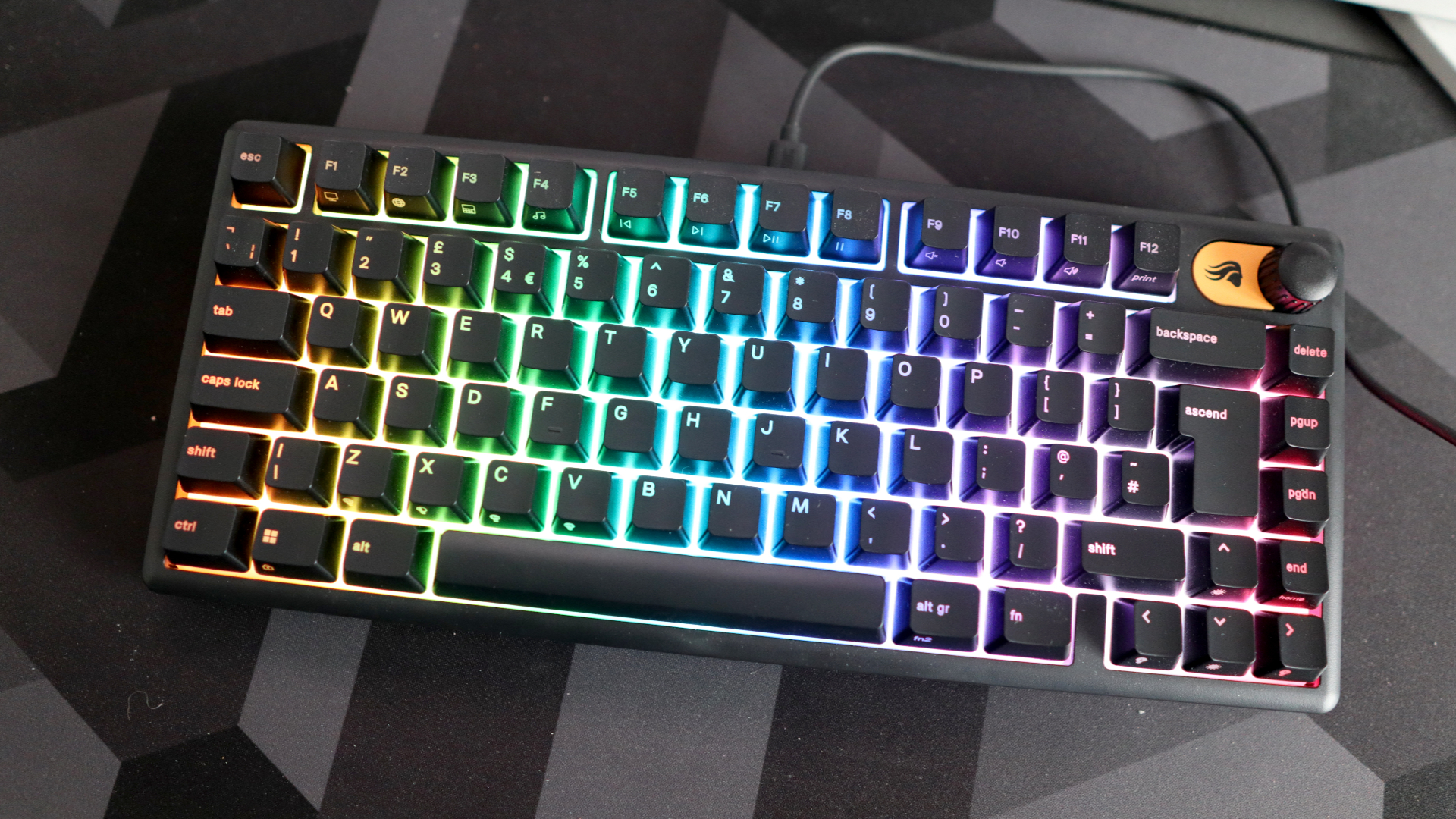This tactics RPG set on a floating New York City could be the next great noir videogame
Aether & Iron is a "decopunk" RPG with characters and factions inspired by New York's actual history.
People mill about laughing in the sun, but something's off. The world feels grainy and sluggish like I'm wading through sand. I need to keep the girl close.
Aether & Iron is so dripping with noir it's leaving behind fedora-shaped puddles. It's full of steely internal dialogue like this where you hear the main character, smuggler Gia Randazzo, take in her surroundings with the same suspicion we've heard from countless PIs, dames, and detectives in the genre.
Gia has good reason to have her guard up: her world is a fantastical, fractured, floating New York City in the 1930s with the gangsters, corruption, and violence synonymous with noir, but these goons have flying cars and laser weaponry to conduct their bad business. Adding to the noir setup, we meet Gia "at a low point in her career [when] her reputation has dried up, her money has disappeared, and she's left with few options to turn her life around," Tyler Whitney, narrative lead on the project, tells me.
I liked the introductory section of Aether & Iron that I played recently while meeting with developer Seismic Squirrel in San Francisco, and I think it'll be a well-written adventure-style game that nails its genre when it releases sometime later in 2025. It's a fully-voiced, 20-hour-long experience that combines decision-driven storytelling (with "several points of branching") and, in a first for turn-based games, flying car tactics combat that plays out on a road grid.
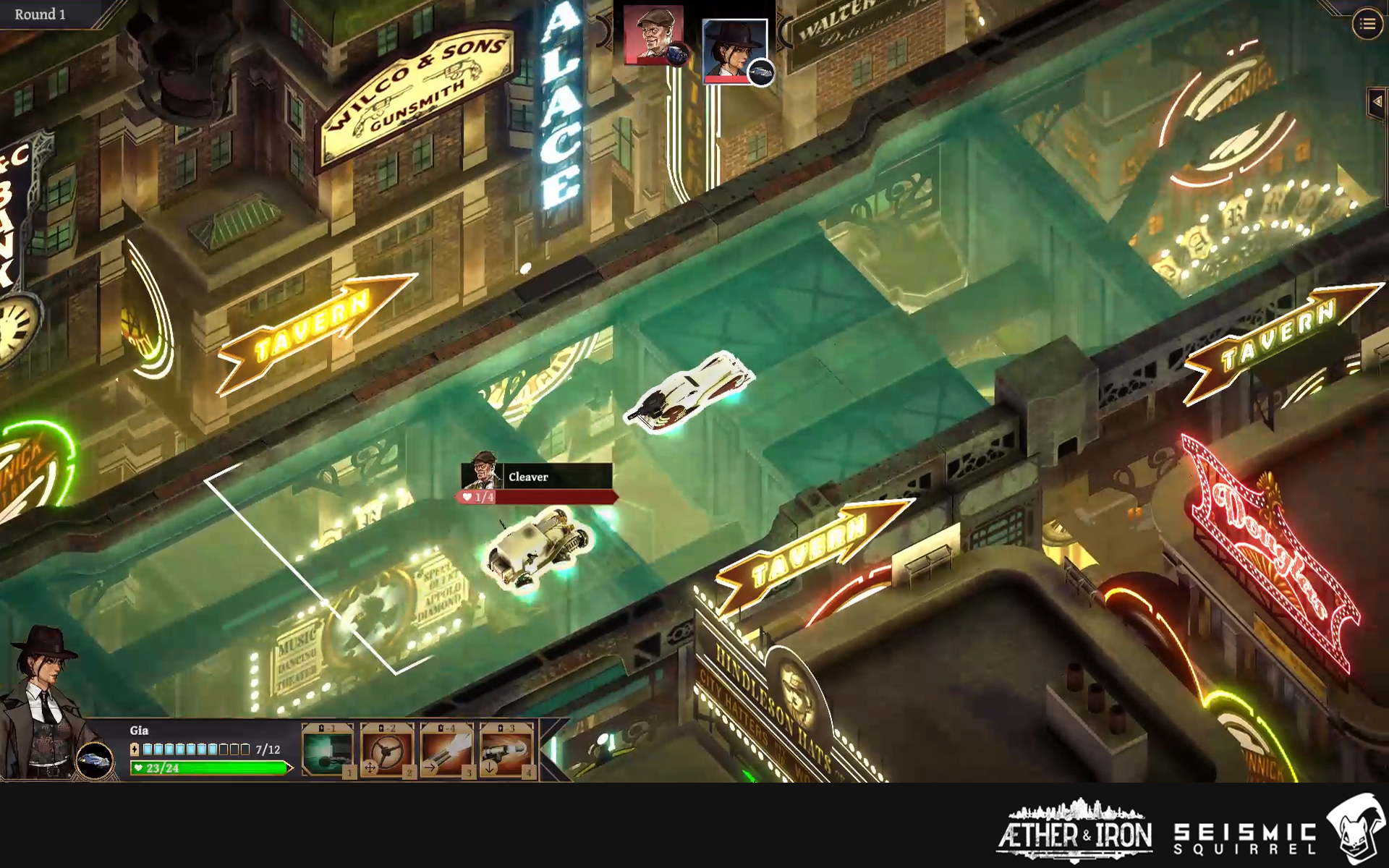
In the combat sections, which can appear as scripted or random encounters, you control up to three friendly vehicles that are tied to party characters. Each of these flying cars has differing directional attacks, movement, and health. In a garage, a mechanic can swap out the weapons and equipment of Gia's ride, outfitting it with the gear you buy or otherwise acquire in the campaign.
I'm unsure how satisfying it'll feel to fight with cars—there's something dissonant about cars that are speeding down an infinite roadway but frozen in turn-based stasis. Road layouts will differ depending on which barony of New York you find yourself in, and obstacles like destroyable civilian vehicles (whose debris, thrown backward, can damage the vehicles behind) will in theory make the combat more complex than move, shoot, move, ram. I'm just not sure if I'll manage to feel the same attachment to a flying Ford as I do to a soldier in XCOM.
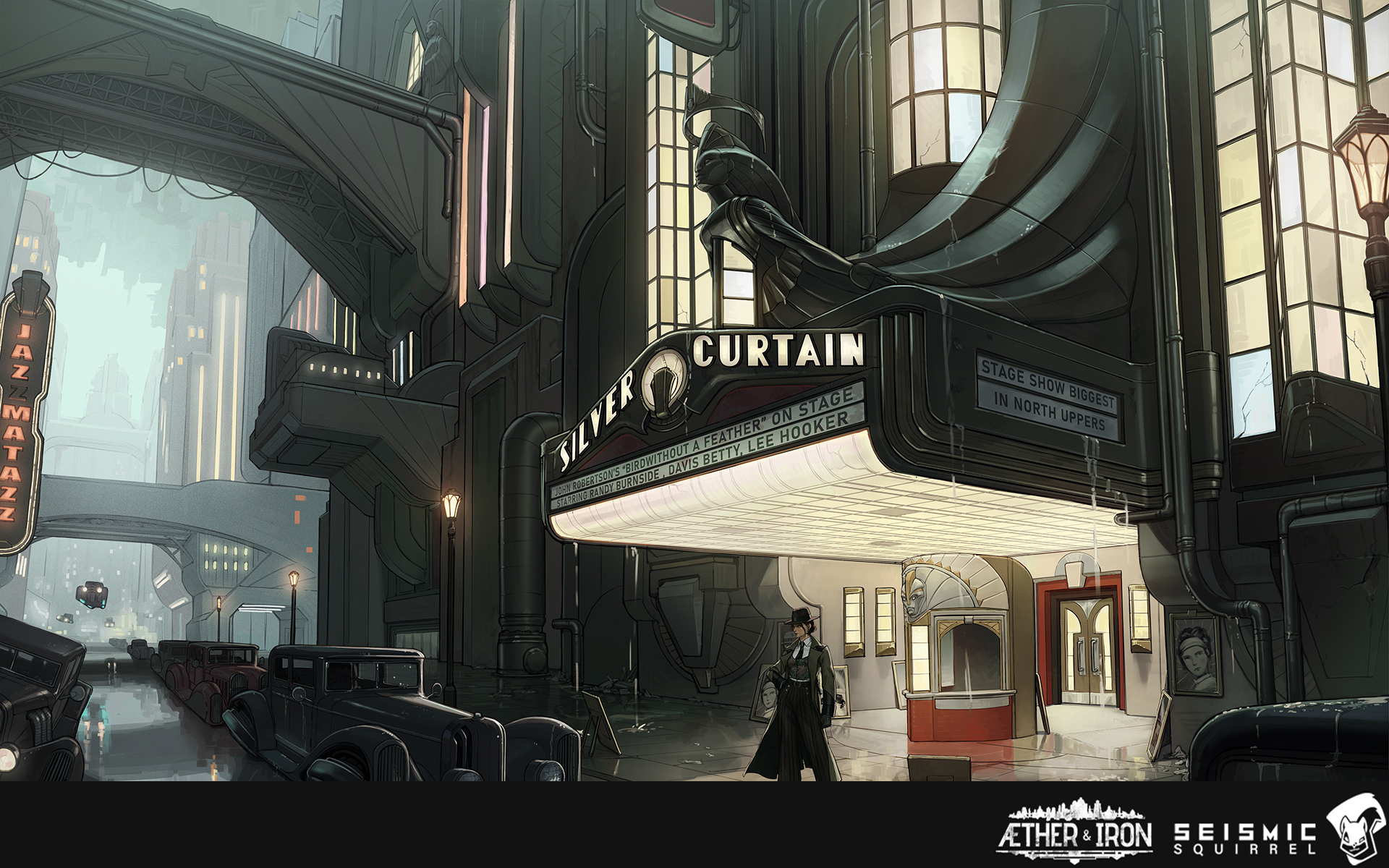
The Empire City
What has my attention most is Aether & Iron's deep approach to plumbing New York City's actual history into its sci-fi world. Despite being a floating city, this version of New York is grounded in many real-life figures, factions, and moments from late 19th/early 20th century New York, says the developer.
Keep up to date with the most important stories and the best deals, as picked by the PC Gamer team.
'Quite a few different endings' are in store.
One is "Marm" Magdalene, a character based off of Fredericka Mandelbaum, who the studio says was seen as the queen of New York's underworld. "Amongst her many feats of thievery, she developed a large crime network that included a group of largely female lieutenants (who all became notorious criminals in their own right) and a school for teaching criminality," says Whitney. "Marm takes the historical premise of Mandelbaum and asks, what would she have become if she hadn't the law breathing down her neck?"
Whitney told me that Taminy Hall and the Pinkertons are two other infamous American groups we'll see adapted in Aether & Iron. Truth is stranger than fiction; simply consider the military-style garbagemen that New York City deployed from 1895-1930, who roamed the city clad head to toe in white. Aether & Iron adapts this uniform into a fully-fledged faction competing for power in the city, a kind of authoritarian, sanitation-themed military force called White Street.
When I encounter them in the story, their armored vehicles and white uniforms are marching down the street in parade formation. "This military parade is meant to celebrate a new dawn for White Street," Whitney says, as "a new form of weaponry is finally giving them an edge to move forward after years of endless war."
The street is lined with onlookers, but also protesters who hold signs and slogans. When an unseen hand opposed to that endless war hurls a molotov cocktail at the formation, White Street reacts tenfold, firing a barrage of lasers into the crowd from their tanks, killing several civilians.
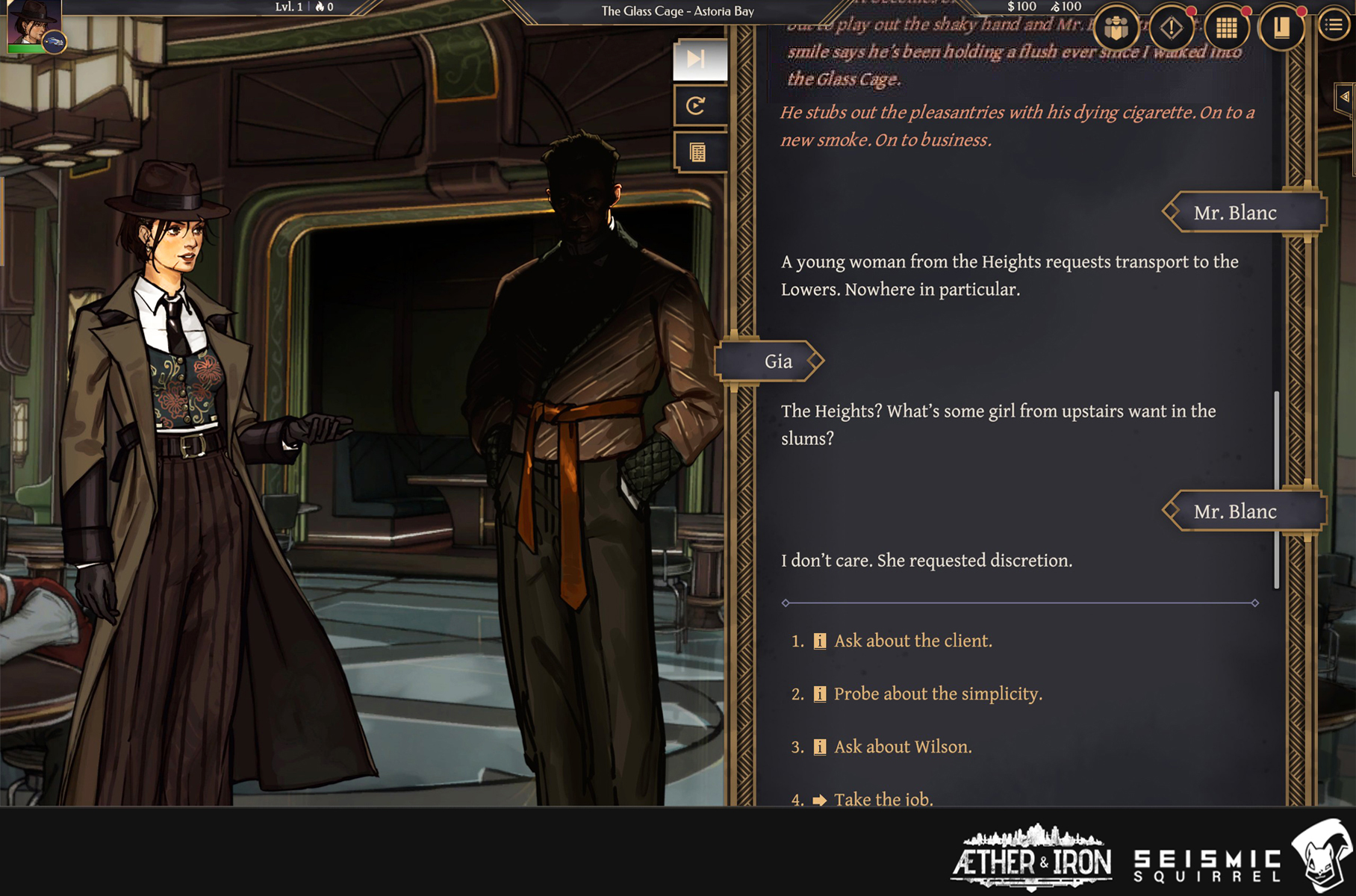
Woven into these tales of crime and conflict are light RPG elements: party members (with their own cars), unlockable talents arranged in a tree (categorized "Brass," "Hustle," and "Smarts"), and dice rolls that determine dialogue outcomes (but despite the UI, this isn't an attempt to replicate Disco Elysium).
Maybe most prominent is a system called Heat. As you make decisions in the story, or if you, say, accidentally-on-purpose blast a civilian taxi during one of your road battles, you'll accrue heat, a measurement of how much attention Gia's getting across the city. Heat can be shed, but it's not strictly negative: it's a valid approach if you want to roleplay as more of an out-in-the-open figure in New York who wears their intentions on their sleeve.
Whitney also tells me that heat will come into play during some of the branching points of Aether & Iron's story, which includes mutually exclusive missions. "There is one mission where we engage in a prison break and we are explicitly told to lie low," he says. "If we follow that directive, ignoring all distractions (which may be morally dubious), we can keep our heat down. But if our heat increases, then those choices lead to a far different outcome of the prison escape."
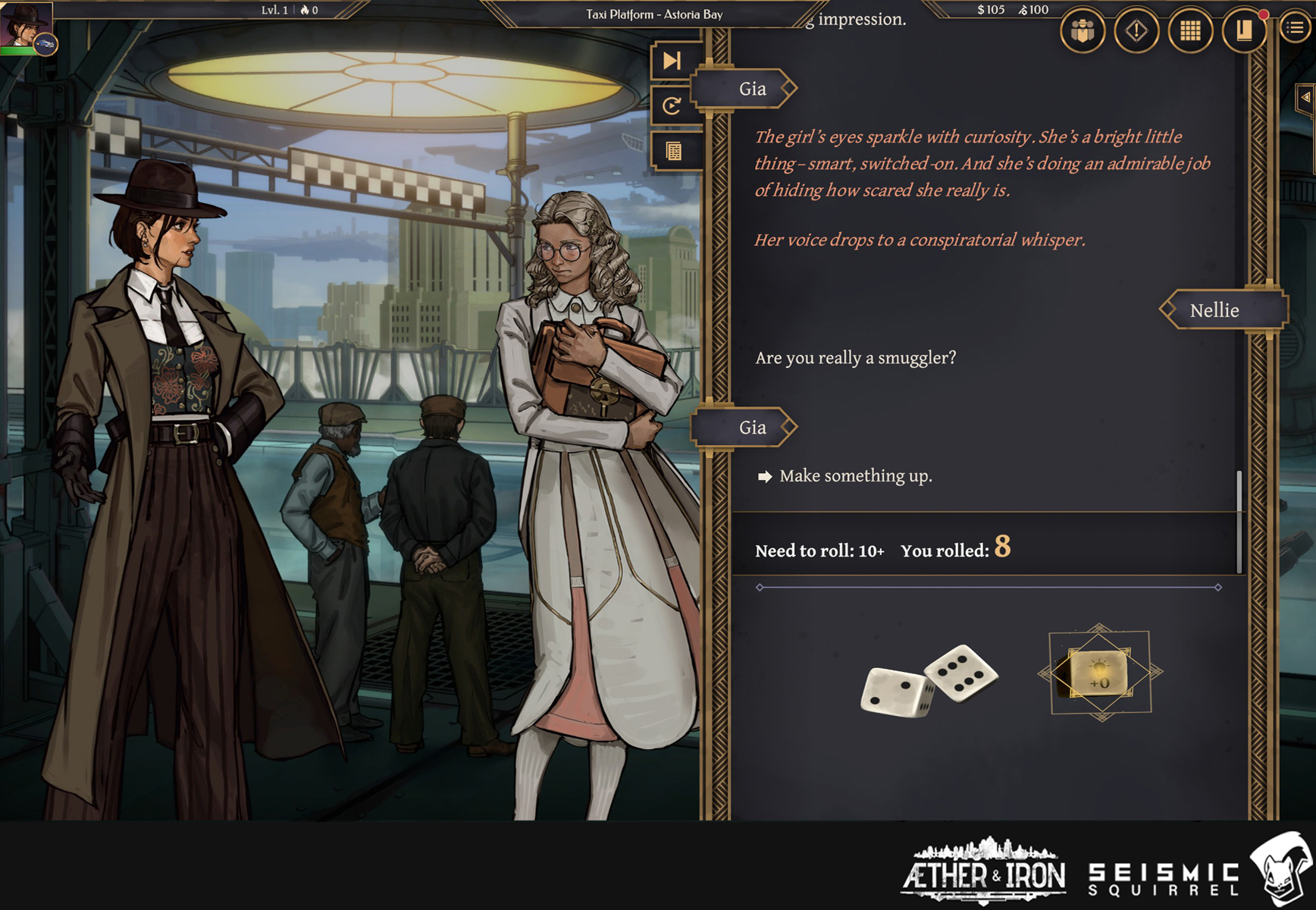
Likewise, "quite a few different endings" are in store, which will be conveyed in a Fallout-style cutscene tour through the outcomes of different characters and factions.
BioShock Infinite was gaming's last treatment of sci-fi noir in the sky, a project that likewise attempted meaningful connections to real-world American history. What encourages me about Aether & Iron is its team's narrative pedigree (studio members have worked on Far Cry, Dragon Age, and Riot's Arcane), and its focus on telling human stories.
Anti-grav cars acknowledged, this isn't a universe where you'll see magic crystals or mobster ogres demanding protection money, but a more volatile, decopunk, semi-fantastical, but more-or-less recognizable version of NYC that you'll drag the main character through. It's refreshing to see a narrative RPG with such a strong sense of place.

Evan's a hardcore FPS enthusiast who joined PC Gamer way back in 2008. After an era spent publishing reviews, news, and cover features, he now oversees editorial operations for PC Gamer worldwide, including setting policy, training, and editing stories written by the wider team. His most-played FPSes are Hunt: Showdown, Team Fortress 2, Team Fortress Classic, Rainbow Six Siege, and Counter-Strike. His first multiplayer FPS was Quake 2, played on serial LAN in his uncle's basement, the ideal conditions for instilling a lifelong fondness for fragging.
You must confirm your public display name before commenting
Please logout and then login again, you will then be prompted to enter your display name.

